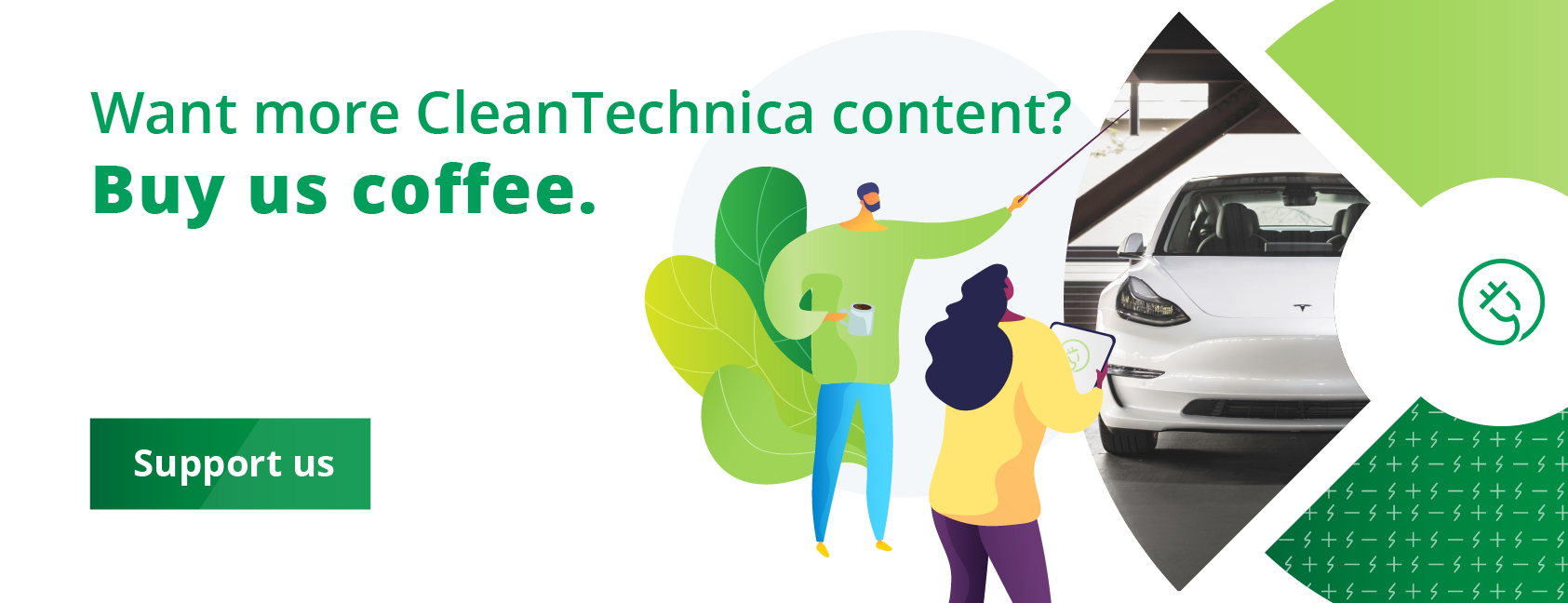
It seems axiomatic that breathing clean air is better for the human body than breathing polluted air, just as drinking clean water is better than drinking polluted water and eating good food is better than eating garbage. Now researchers from the Keck School of Medicine at the University of Southern California claim they have found evidence that electric cars lead to better air quality, and that in turn leads to better health outcomes for people living where those electric cars are located.
In the first study to use real world data to link electric cars, air pollution, and health, team of researchers from the Keck School of Medicine have begun to document the actual impact of electric vehicle adoption. Using data from publicly available sources, they analyzed a “natural experiment” occurring in California as residents in the state rapidly transitioned to electric cars. The results have recently been published in the journal Science of the Total Environment. Here is a lightly edited abstract of the study’s findings.
“The transition to electric vehicles is projected to have considerable public health co-benefits, but most evidence regarding air quality and health impacts comes from projections rather than real world data. We evaluated whether population level respiratory health and air quality co-benefits were already detectable at the relatively low levels of zero emissions vehicles (in California) and evaluated the ZEV adoption gap in underserved communities.
“We conducted a zip code level ecologic study relating changes in annual number of ZEVs per 1000 population from 2013 to 2019 to: (i) annual average monitored nitrogen dioxide (NO2) concentrations and (ii) annual age adjusted asthma related emergency department visit rates, while considering educational attainment.
“The average (number of zero emissions vehicles) increased from 1.4 per 1000 population in 2013 to 14.7 per 1000 in 2019. ZEV adoption was considerably slower in zip codes with lower educational attainment. A within zip code increase of 20 ZEVs per 1000 was associated with a − 0.41 parts per billion change in annual average NO2 in an adjusted model. A within zip code increase of 20 ZEVs per 1000 population was associated with a 3.2 % decrease in annual age adjusted rate of asthma related emergency room visits.
“The team compared data on total ZEV registration, air pollution levels and asthma related emergency room visits across the state between 2013 to 2019. As ZEV adoption increased within a given zip code, local air pollution levels and emergency room visits dropped.”
“When we think about the actions related to climate change, often it’s on a global level,” said Erika Garcia, PhD, MPH, an assistant professor of population and public health sciences at the Keck School of Medicine and the study’s lead author. “But the idea that changes being made at the local level can improve the health of your own community could be a powerful message to the public and to policy makers.”
The researchers also found that while total ZEVs increased over time, adoption was considerably slower in low resource zip codes — what the researchers refer to as the “adoption gap.” That disparity points to an opportunity to restore environmental justice in communities that are disproportionately affected by pollution and related health problems.
“The impacts of climate change on health can be challenging to talk about because they can feel very scary,” said Sandrah Eckel, PhD, an associate professor of population and public health sciences at the Keck School of Medicine and the study’s senior author. “We’re excited about shifting the conversation towards climate change mitigation and adaptation, and these results suggest that transitioning to ZEVs is a key piece of that.”
Health Benefits Of Electric Cars
To study the effects of electric vehicle adoption, the research team analyzed and compared four different datasets. First, they obtained data on ZEVs (which includes battery electric, plug-in hybrid, and hydrogen fuel cell cars) from the California Department of Motor Vehicles and tabulated the total number registered in each zip code for every year between 2013 and 2019.
They also obtained data from U.S. Environmental Protection Agency air monitoring sites on levels of nitrogen dioxide, an air pollutant related to traffic, and zip code level asthma-related visits to the emergency room. Asthma is one of the health concerns long linked with air pollutants such as NO2, which can also cause and exacerbate other respiratory diseases, as well as problems with the heart, brain and other organ systems.
Finally, the researchers calculated the percentage of adults in each zip code who held bachelor’s degrees. Educational attainment levels are frequently used as an indicator of a neighborhood’s socioeconomic status.
At the zip code level, for every additional 20 ZEVs per 1,000 people, there was a 3.2% drop in the rate of asthma-related emergency visits and a small suggestive reduction in NO2 levels. On average across zip codes in the state, ZEVs increased from 1.4 to 14.6 per 1,000 people between 2013 and 2019. ZEV adoption was significantly lower in zip codes with lower levels of educational attainment. For example, a zip code with 17% of the population having a bachelor’s degree had, on average, an annual increase of 0.70 ZEVs per 1,000 people compared to an annual increase of 3.6 ZEVs per 1,000 people for a zip code with 47% of the population having a bachelor’s degree.
Past research has shown that underserved communities, such as lower income neighborhoods, tend to face worse pollution and associated respiratory problems than more affluent areas. If ZEVs replace gas-powered cars in those neighborhoods, the people who live there would benefit substantially.
“Should continuing research support our findings, we want to make sure that those communities that are overburdened with the traffic-related air pollution are truly benefiting from this climate mitigation effort,” Garcia said.
Further Study Of Electric Cars Needed
While climate change is a massive health threat, mitigating it offers a significant public health opportunity, Eckel said. As one of the first studies to quantify the real world environmental and health benefits of ZEVs, the research can help demonstrate the power of this mitigation measure, including possibly reduced health care utilization and expenditures.
The findings are promising, Garcia said, but many questions remain. Future studies should consider additional impacts of ZEVs, including emissions related to brake and tire wear, mining of materials for their manufacture, and disposal of old cars. The researchers also hope to study additional types of pollutants and other classes of vehicles, in addition to conducting a follow-up study of the effects of the ever-growing share of ZEVs in the state.
Moving forward, transitioning to ZEVs is just one part of the solution, Eckel said. Shifting to public transport and active transport, including walking and biking, are other key ways to boost environmental and public health.

The Takeaway
This study is interesting, if only because it tends to run counter to the scary claims coming from other sources that identify electric cars as potentially damaging to the environment and human health. There are the claims that EVs are adding more fine particulates to the atmosphere because they weigh more. That’s true, of course. A 2023 Chevy Bolt LT weighs 3589 pounds. The similarly sized Buick Encore weighs 3063 lb. So yes, the Bolt weighs about 500 lb more.
But let’s add a little context here. Emissions Analytics is trumpeting the extra tire degradation of electric cars, but fails to address the ballooning weight of the world’s favorite cars — SUVs. The Chevy Tahoe weighs 5473 lb. The Suburban checks in at 5616, and the Chevy Silverado starts at 4,400 lb, but is usually over 5000 lb in its most popular trim level.
There is also a lot of scary talk about the environmental toll imposed by mining materials for electric cars, things like lithium, manganese, aluminum, and copper. The people spreading that information never have one word to say about the mining that takes place to manufacture traditional cars and trucks.
If we were honest with each other, we would acknowledge that all industrial activity tends to degrade the environment. It’s weird that those who buy SUVs and trucks pretend their vehicles are assembled from moon beams and pixie dust. Hypocrisy is a poor basis for making a persuasive argument. It marks the people making such arguments and liars and charlatans.
The Keck School study is the first to find a statistically valid link between electric cars and better health. Kudos to the researchers for getting this conversation started.
I don’t like paywalls. You don’t like paywalls. Who likes paywalls? Here at CleanTechnica, we implemented a limited paywall for a while, but it always felt wrong — and it was always tough to decide what we should put behind there. In theory, your most exclusive and best content goes behind a paywall. But then fewer people read it! We just don’t like paywalls, and so we’ve decided to ditch ours. Unfortunately, the media business is still a tough, cut-throat business with tiny margins. It’s a never-ending Olympic challenge to stay above water or even perhaps — gasp — grow. So …

.jpg)

